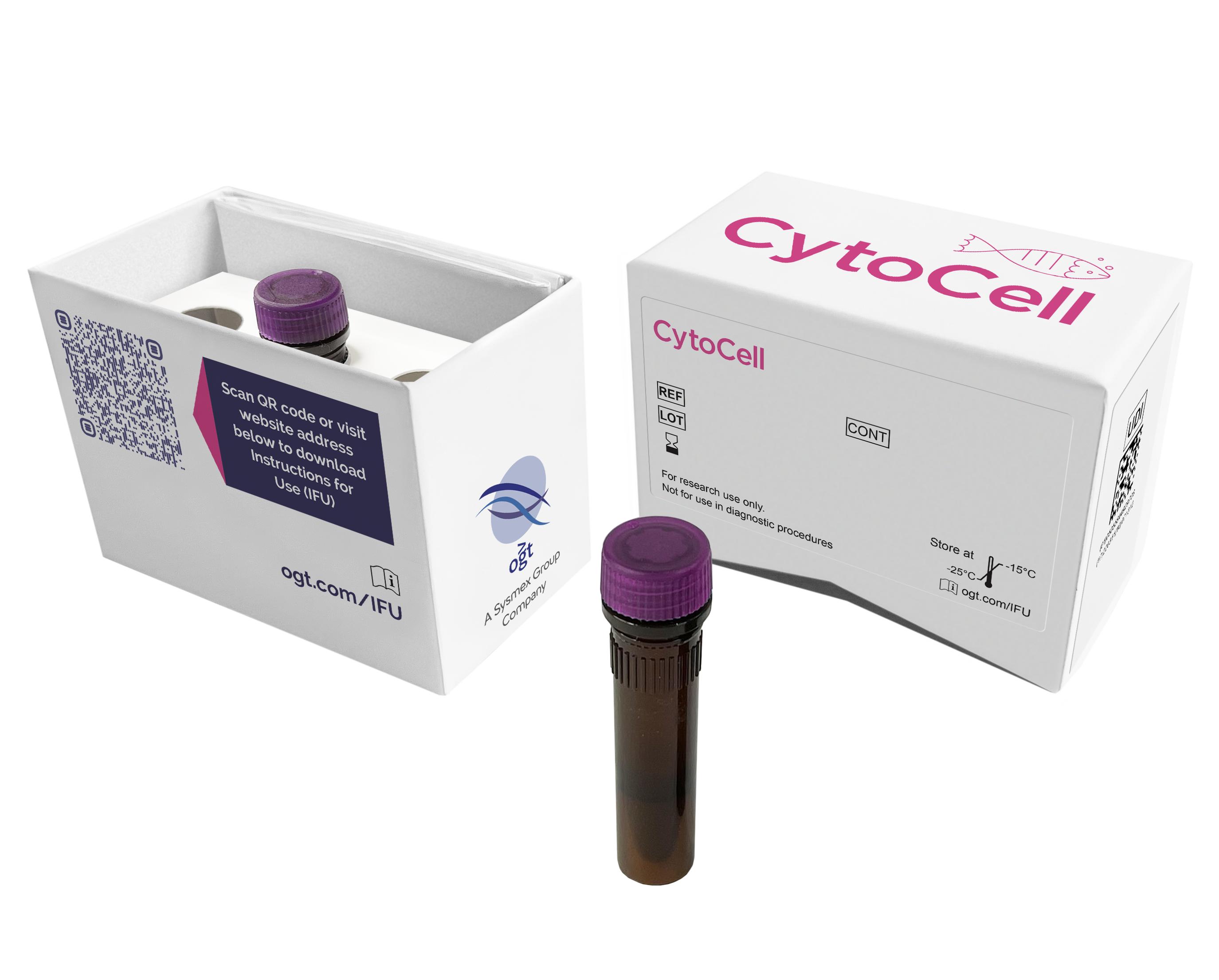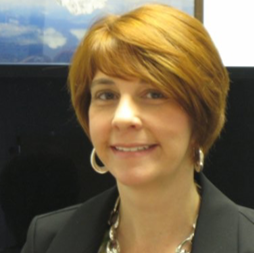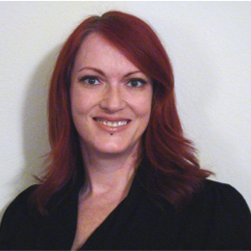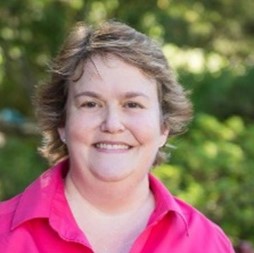
The CELF2 (BRUNOL3) probe is 144kb, labelled in red and covers a region including the D10S2196, D10S2420 and D10S1364E markers. The probe mix also contains a control probe for the chromosome 10 centromere (D10Z1), labelled in green.
DiGeorge syndrome1, and a variety of congenital malformation syndromes including Velocardiofacial syndrome (VCFS)2, share the deletion of chromosome 22 at 22q11.22,3,4,5. These chromosome 22 deletions are collectively coined CATCH22, a mnemonic that covers the clinical findings of Cardiac abnormality, Abnormal facies, Thymic aplasia, Cleft palate and Hypocalaemia/Hyperthyroidism due to a chromosome 22 deletion. In DiGeorge syndrome, however, cases have also been found in which patients have a deletion on chromosome 10p14 (DGS2) instead of chromosome 226,7,8.
The deletion of the DGS2 locus on 10p may be 50 times less frequent than that of the DGS1 locus on 22q and has been estimated to occur in 1 in 200,000 live births9. A gene called BRUNOL3 (now named CELF2) has been identified within the 300kb minimally deleted region of DGS2 and is postulated to be involved in the DGS2 deletion10. BRUNOL3 is a candidate gene for the heart defect and thymus hypoplasia/aplasia associated with partial monosomy 10p10 and may be involved in atrial septal defects (ASDs), a common cardiac anomaly associated with DGS211.
In vitro diagnostic (IVD)
→ English/Français/Italiano/Deutsch/Español
→ Polski
Research use only (RUO)
Find certificate of analysis documentation for our CytoCell FISH probes
Our lab has been using a wide range of CytoCell FISH probes for a number of years, and have been increasing this range all the time. The probes have clear bright signals and show good reproducibility. CytoCell provides fast delivery of catalogue probes, and are very responsive when we have any queries or problems with their products.

Bridget Manasse
Addenbrookes Hospital, Cambridge University Hosiptals NHS Foundation Trust, UK
In our hands, CytoCell FISH probes have proven to be of the highest quality with bright, easy to interpret signals, thus providing confidence in our results. OGT's customer support is outstanding, as their staff are extremely knowledgeable and truly care about their customers and their customers’ needs.

Jennie Thurston
Director of Cytogenetics, Carolinas Pathology Group, USA
I first came across CytoCell FISH probes in a previous lab I worked in and I was struck by the quality of the products. Since this time, I have been recommending and introducing CytoCell probes across all application areas — now they are the primary FISH probes used in our lab. They have an excellent range of products and their ready-to-use reagent format saves considerable time.

Elizabeth Benner
Medical Technologist, University of Arizona Health Network, USA
We have been working with CytoCell fish probes for two decades because of their excellent clarity and intensity regardless of the size of the probe. It is so clear and simple to detect.
Dr. Marina Djurisic
Head of Laboratory of Medical Genetics, Mother and Child Health Care Institute of Serbia “Dr Vukan Cupic”, Serbia
The quality and consistency of CytoCell’s probes means I can trust the results, and my clients get their results in a timely manner.

Dr. Theresa C. Brown
Director, Cytogenetics Laboratory, Hayward Genetics Center, Tulane University School of Medicine, USA
It was very important for us to have more consistent results with our probes — easy-to-read bright signals and a range of vial sizes, which is much more cost-effective.

Janet Cowan, PhD
Director of the Cytogenetics Laboratory, Tufts Medical Center, USA
Not only do CytoCell offer an extensive range of high-quality FISH probes, the customer support is also excellent — providing fast access to all the probes I need. The probes are highly consistent with bright signals allowing easy scoring of results.
Dr. Eric Crawford
Senior Director, Genetics Associates Inc., USA
The quality and reproducibility of results using the CytoCell kit has been vital in accurately detecting co-deletions in our glioma investigations. We now have a cost-effective test that we can rely on that is also easy to use and interpret. We've been consistently impressed with this kit - not to mention the support offered by OGT's customer service, and have completely transitioned over to CytoCell probes.
Gavin Cuthbert, FRCPath
Head of Cancer Cytogenetics, Northern Genetics Servce, Newcastle, UK